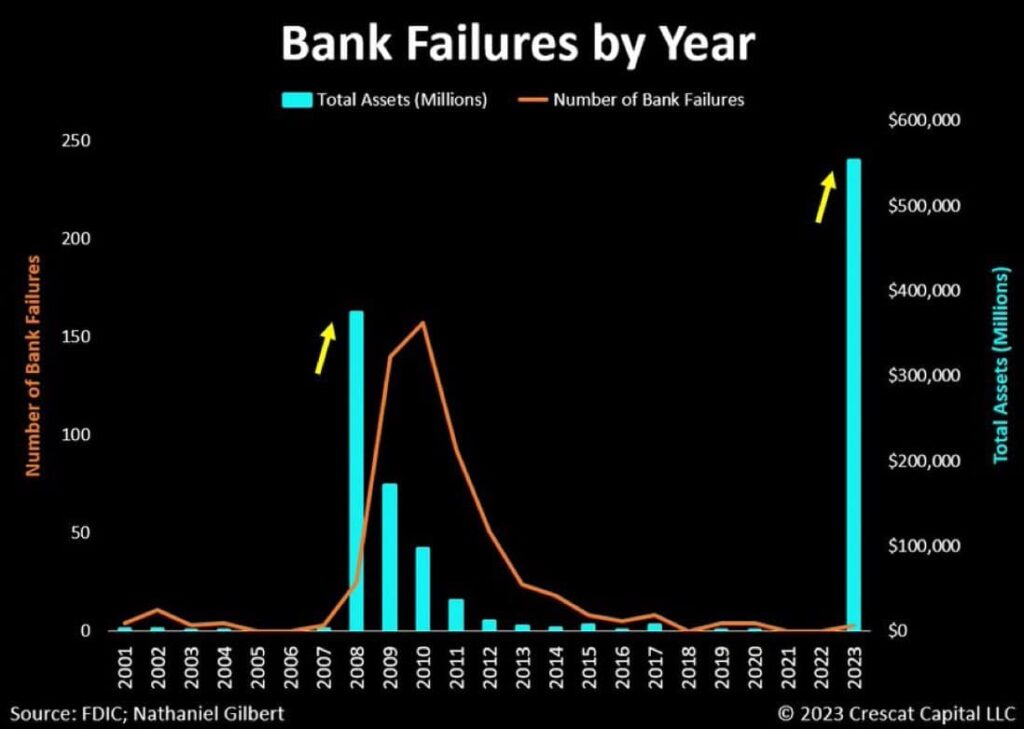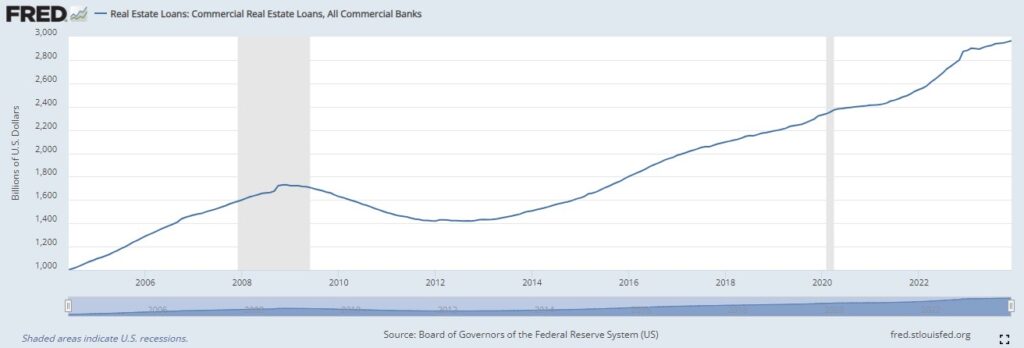During 2008, the US housing market’s decline triggered a global financial crisis, spreading from the United States to other parts of the world through interconnections in the global financial system. Numerous banks worldwide faced substantial losses and had to seek government assistance to avert bankruptcy, and one expert pointed to signs that indicated its repetition.
The resurgence of challenges within the banking industry is currently the most notable development, echoing the script of the 2008 financial crisis. As per the usual sequence, one issue triggers another, creating a cascading effect that transforms into a more substantial problem, prompting government intervention, as financial expert Otavio Costa indicated on February 1.
Even though, in 2023, four failing financial institutions collectively held more assets than the entire banking crisis during the Global Financial Crisis, it’s crucial to note that over 150 institutions failed back then.
This unfolding chain reaction is in its early stages, notably if the Bank Term Funding Program concludes on March 11. Fundamentally, these challenges underscore the Federal Reserve’s role as the lender of last resort, emphasizing the growing importance for investors to possess tangible assets in this environment.

Worrying indicators
With the persisting problem come persistent indicators that haven’t changed since the previous collapse and which showcase the connection between the housing market and financial institutions.
David Sommers, a financial analyst, pointed out that notwithstanding the widely acknowledged challenges in the commercial real estate sector, particularly with office properties, banks’ exposure to these loans reached a new all-time high in December.

The U.S. real estate sector is causing concern with dropping sales and fears of a market crash. In Q4 2023, Redfin reported that an average American household needs over $115,000 to afford a home, given a 15% increase in prices from the previous year. The average U.S. salary is only half of what’s needed. Financial experts, including Robert Kiyosaki, have warned of economic challenges and potential market crashes.
Some banks are already suffering
With the potential storm brewing, some banks are already experiencing heavy losses and are being forced to engage in cost-saving layoffs.
One is Deutsche Bank, set to eliminate 3,500 positions as part of a cost-cutting initiative following a 30% decline in its Q4 profit. This move follows Citigroup’s announcement of significant layoffs affecting 20,000 employees three months ago.
Regional banks in the U.S. have already suffered the worst effects. Western Alliance shares fell by up to 13%, Valley National Bancorp dropped by over 11.8%, and Zions Bancorp stock declined by about 9.8%. East West Bancorp and M&T Bank shares saw losses of around 7% before a slight rebound.
Looking overseas, Japanese bank Aozora is witnessing a significant downturn, with its shares experiencing the steepest two-day drop since its initial public offering. The cause behind this decline is the bank’s revelation of substantial exposure to the US commercial real estate market.
Whether this is the beginning of another banking crisis, which might be even worse than 2008, or just a false alarm, only time will tell. However, some compelling arguments and signs indicate a negative outcome.







